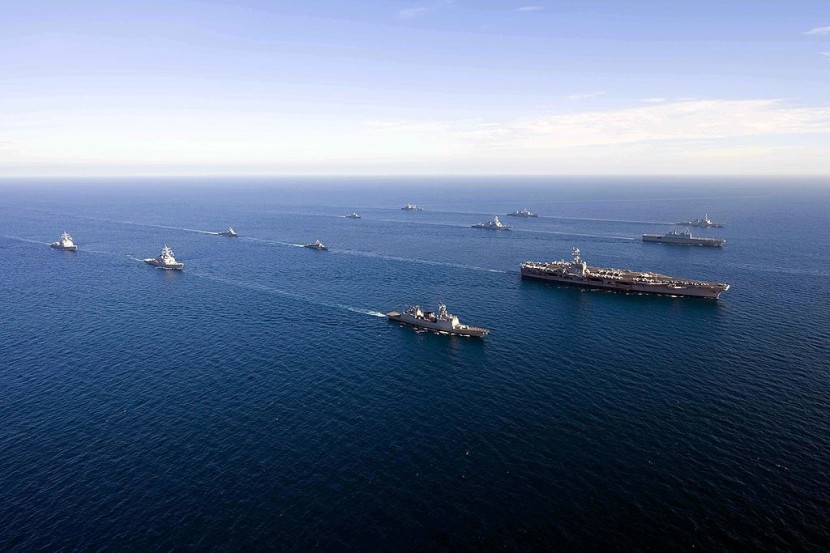
- The US, South Korea and Japan started joint naval drills off the Korean Peninsula
- The anti-submarine and rescue drills was conducted in international waters off South Korea's Jeju Island
- North Korea has pledged an unprecedented response to the drills
The United States, South Korea, and Japan began coordinated naval exercises off the Korean Peninsula's coast, a move expected to enrage North Korea, which launched its first missile over Japan in five years during comparable exercises in 2022.
The two-day anti-submarine and rescue drills began on Monday in international waters off the coast of South Korea's Jeju Island and included the aircraft carrier group USS Nimitz, according to South Korea's Defense Ministry.
US, South Korea, and Japan Hold Anti-Submarine Drill
The government of North Korean leader Kim Jong Un has pledged an unprecedented response to the drills and unveiled new nuclear-capable weaponry aimed at the United States and its two allies, which host the majority of US troops in the region.
South Korea's military is skeptical of North Korea's claim that a new undersea drone tested in March could deliver a "radioactive tsunami" capable of such a weapon.
North Korea has warned that the United States and its "puppet state" allies are "bringing themselves closer to a grave danger" by participating in the drills. Per The Strait Times, it stated that its nuclear arsenal was always ready for use to thwart "war maniacs' irresponsible acts."
In reaction to the earlier South Korea-US war games, North Korea conducted a barrage of missile tests last month. The tested weapons included a nuclear-capable submarine drone and a submarine-launched cruise missile, indicating North Korea is attempting to diversify its undersea military systems.
Photos published in North Korea's state-run media last week depicted leader Kim Jong Un standing alongside about ten "Hwasan (volcano)-31" missiles with unique serial numbers and crimson tips.
According to ABC News, eight types of short-range weaponry capable of carrying the "Hwasan-31" warhead were listed on a nearby poster. Previous test flights of these missiles indicate that they can strike important targets in South Korea, including US military bases.
As North Korea's last two nuclear tests in 2016 and 2017 following the exposure of other warheads, some analysts believe that the warhead's unveiling may be a precursor to a nuclear test. If North Korea were to execute a nuclear test, it would be the nation's eighth explosion overall and its first since September 2017.
During the warhead-related event last week, Kim ordered officials to increase bomb fuel production to expand his country's nuclear arsenal "exponentially."
North Korea Makes Nuclear Threat
On Saturday, 38 North, a North Korea-focused website, reported that recent commercial satellite imagery of the North's main Yongbyon nuclear complex indicates a high activity level, including the continued operation of its 5-megawatt reactor and new construction around the uranium enrichment facility.
Per The Independent, international experts disagree on whether North Korea has operational nuclear-armed missiles. South Korea's defense minister, Lee Jong-Sup, recently informed parliament that the North's technology to produce tiny warheads that can be installed on advanced short-range missiles is believed to have improved significantly.
North Korea could conduct additional missile tests to protest the South Korea-US-Japan drills since it considers such exercises a threat to its security. Kim Jong Un referred to the recent South Korea-US carrying out "reckless military provocations" that disrespect North Korea's "patience and warning."
In addition to anti-submarine drills, the three nations will perform humanitarian search-and-rescue operations, such as rescuing people who have fallen into the ocean and treating emergency patients, according to a Defense Ministry statement.
Related Article : North Korea Nuclear Facility Indicated High Activity
@YouTube
© 2025 HNGN, All rights reserved. Do not reproduce without permission.








